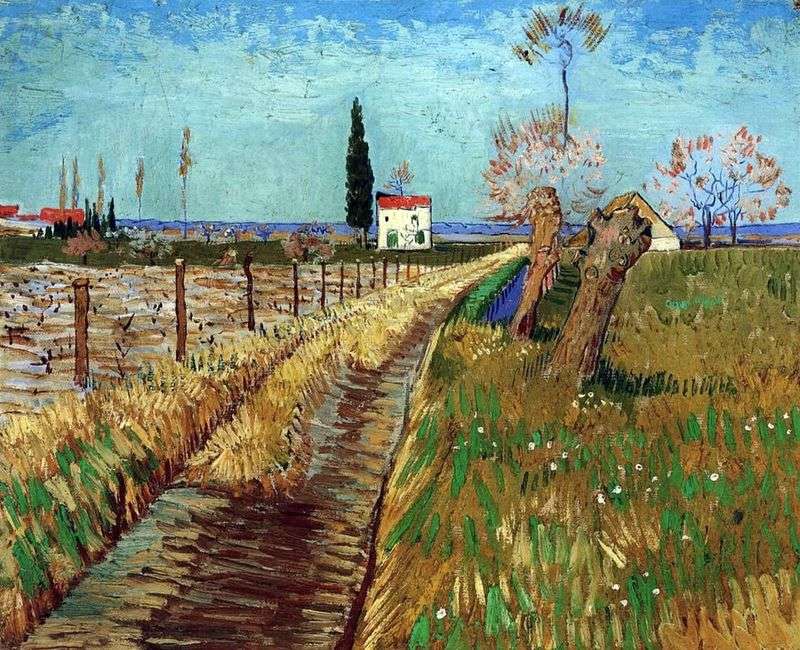
In the autumn of 1888, living in Arles, Van Gogh began a new cycle of paintings on a peasant theme.
Most of them he tried to perform in nature, but this was hampered by rain. But, despite the bad weather, Van Gogh still managed to finish a few pictures, among which was this landscape. On it, the artist painted newly plowed fields and a village in the background.
Van Gogh greatly simplified the composition, dividing the canvas into two parts. Most of it was taken away from the image of the land with deep furrows from the plow, extending deep into the space. Ashen-brown soil colors turn into purple and greenish shades. Soft colors create an atmosphere of peace and tranquility. Van Gogh masterfully showed the texture of plowed land, depicting large lumps in the foreground.
The autumn landscape becomes very bright and joyful due to the bright, saturated sky. Van Gogh used the pure colors of blue and blue paint to give it depth. With quick strokes, he painted small carefree clouds floating in the sky. Far away, separating the sky from the earth by a dark strip of horizon, Van Gogh depicted the peasant plots with densely planted trees and orange roofs of houses.
 Plowed field with the rising sun by Vincent Van Gogh
Plowed field with the rising sun by Vincent Van Gogh A path in a field in willows by Vincent Van Gogh
A path in a field in willows by Vincent Van Gogh House of Vincent in Arles (yellow House) by Vincent Van Gogh
House of Vincent in Arles (yellow House) by Vincent Van Gogh Two women on the heathland by Vincent Van Gogh
Two women on the heathland by Vincent Van Gogh Green wheat field with cypress by Vincent Van Gogh
Green wheat field with cypress by Vincent Van Gogh Seeder by Vincent Van Gogh
Seeder by Vincent Van Gogh Boulders and Oak by Vincent Van Gogh
Boulders and Oak by Vincent Van Gogh Langlois Bridge in Arles and erasing women by Vincent Van Gogh
Langlois Bridge in Arles and erasing women by Vincent Van Gogh